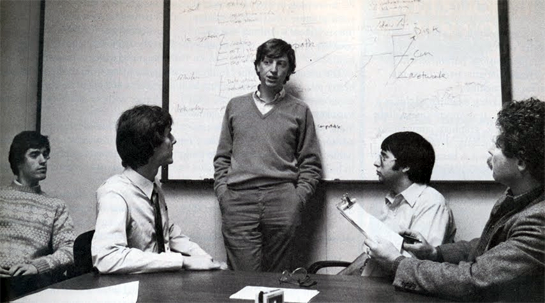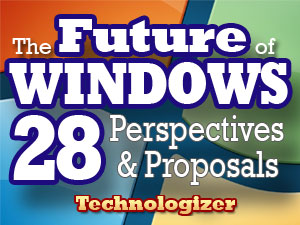(Tandy Trower spent 28 years at Microsoft, working on everything from Microsoft BASIC to Windows 1.0 to user interfaces to robotics. In this article–part of our commemoration of Microsoft Bob’s fifteenth anniversary–he recalls his initial reaction to Bob and the Bob-like Office Assistant, and his spearheading of Microsoft Agent, a later attempt to build a better “social interface” of the type that Bob represented.)
 After I managed the first two releases of Windows, I shifted my focus to helping improve the design and usability of Microsoft’s products, founding the company’s first user interface design services team. For most products, my team’s efforts involved improving window and icon designs, providing usability testing, defining good design practices, and promoting consistency between products. One of my most unique challenges came with the development of the now infamous Microsoft Bob.
After I managed the first two releases of Windows, I shifted my focus to helping improve the design and usability of Microsoft’s products, founding the company’s first user interface design services team. For most products, my team’s efforts involved improving window and icon designs, providing usability testing, defining good design practices, and promoting consistency between products. One of my most unique challenges came with the development of the now infamous Microsoft Bob.
Bob was a very different kind of product than Microsoft had ever created before. It was developed out of motivation to improve and simplify Windows and Microsoft’s application user interfaces, and has somewhat unfairly been considered one of the company’s biggest failures.
Bob first came onto my radar after I received an email from Bill Gates asking me to check on a new project he wanted me to review. The message included a document written by Karen Fries, the Bob program manager. In that document, Karen discussed the motivation behind Bob: the increasing complexity of richly featured GUI applications. There were so many choices for the user in terms of commands and options that it was like going to the supermarket and looking down the cereal aisle and trying to make a choice, or visiting a restaurant with a vast menu.
Continue Reading →
 Bring a reusable travel mug into your local Starbucks on April 15th, and you’ll get a free brewed coffee. Two things I’ll guarantee: The lines will be long and the baristas won’t be perky. And I’ll bet they’ll try to pawn off a cup of their insipid Pike Place brew on you. (Me, I still prefer Peets…) [Thanks, Tom.]
Bring a reusable travel mug into your local Starbucks on April 15th, and you’ll get a free brewed coffee. Two things I’ll guarantee: The lines will be long and the baristas won’t be perky. And I’ll bet they’ll try to pawn off a cup of their insipid Pike Place brew on you. (Me, I still prefer Peets…) [Thanks, Tom.]
 In 2008, in Microsoft’s own TechNet magazine, Windows team member Raymond Chen
In 2008, in Microsoft’s own TechNet magazine, Windows team member Raymond Chen  After I managed the
After I managed the 

 In 1985, almost all PCs sat on desktops, the Internet was a Defense Department research project, and the cell phone revolution had barely gotten underway. It was also the year that Microsoft launched a DOS front-end called
In 1985, almost all PCs sat on desktops, the Internet was a Defense Department research project, and the cell phone revolution had barely gotten underway. It was also the year that Microsoft launched a DOS front-end called  It’s a PC convention that dates to the 1980s: Press the F1 key, and you’ll pull up online help. Except Microsoft is now warning Windows XP users to ignore any Web site that asks them to press F1.
It’s a PC convention that dates to the 1980s: Press the F1 key, and you’ll pull up online help. Except Microsoft is now warning Windows XP users to ignore any Web site that asks them to press F1.